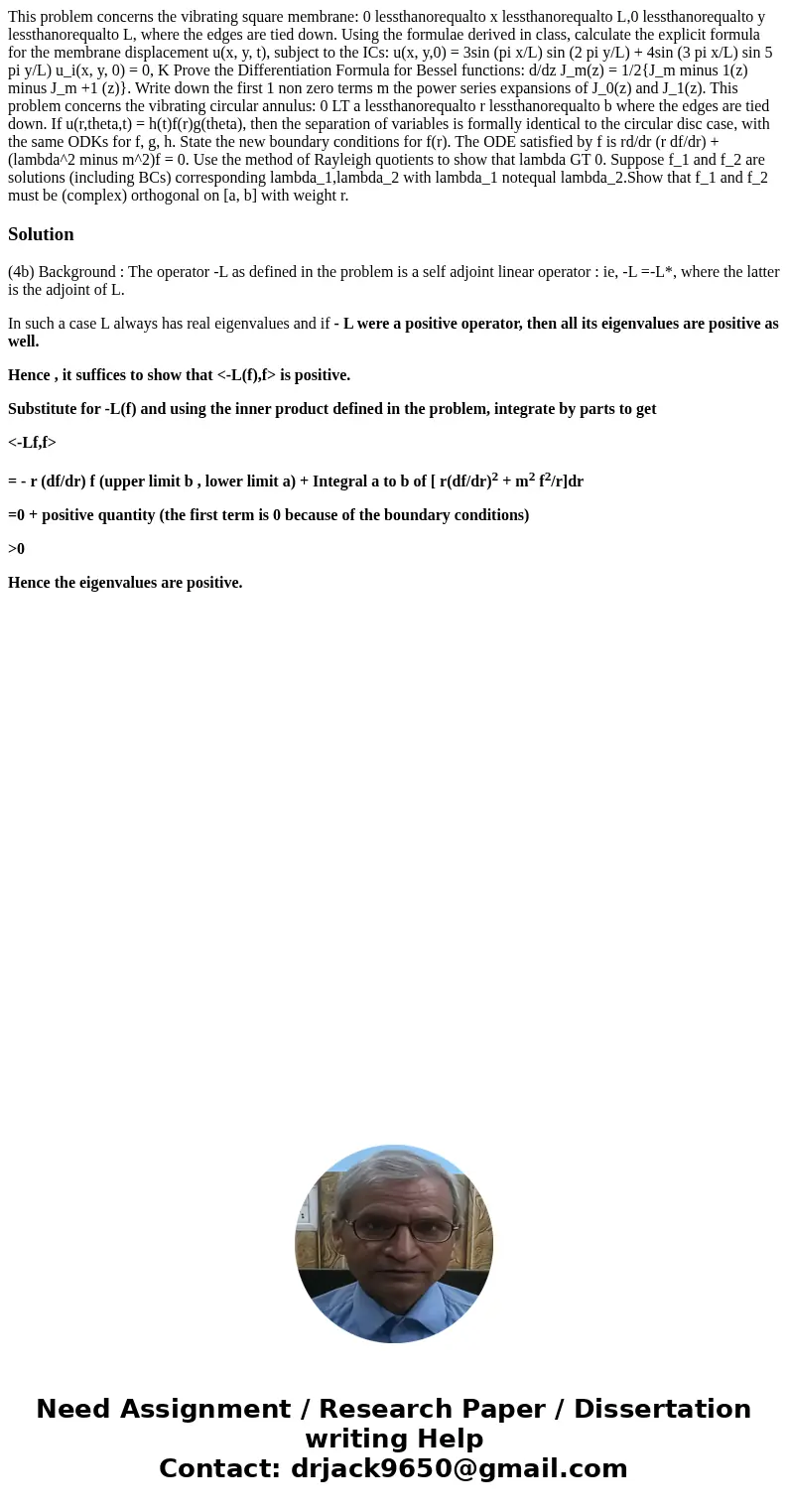This problem concerns the vibrating square membrane 0 lessth
This problem concerns the vibrating square membrane: 0 lessthanorequalto x lessthanorequalto L,0 lessthanorequalto y lessthanorequalto L, where the edges are tied down. Using the formulae derived in class, calculate the explicit formula for the membrane displacement u(x, y, t), subject to the ICs: u(x, y,0) = 3sin (pi x/L) sin (2 pi y/L) + 4sin (3 pi x/L) sin 5 pi y/L) u_i(x, y, 0) = 0, K Prove the Differentiation Formula for Bessel functions: d/dz J_m(z) = 1/2{J_m minus 1(z) minus J_m +1 (z)}. Write down the first 1 non zero terms m the power series expansions of J_0(z) and J_1(z). This problem concerns the vibrating circular annulus: 0 LT a lessthanorequalto r lessthanorequalto b where the edges are tied down. If u(r,theta,t) = h(t)f(r)g(theta), then the separation of variables is formally identical to the circular disc case, with the same ODKs for f, g, h. State the new boundary conditions for f(r). The ODE satisfied by f is rd/dr (r df/dr) + (lambda^2 minus m^2)f = 0. Use the method of Rayleigh quotients to show that lambda GT 0. Suppose f_1 and f_2 are solutions (including BCs) corresponding lambda_1,lambda_2 with lambda_1 notequal lambda_2.Show that f_1 and f_2 must be (complex) orthogonal on [a, b] with weight r.
Solution
(4b) Background : The operator -L as defined in the problem is a self adjoint linear operator : ie, -L =-L*, where the latter is the adjoint of L.
In such a case L always has real eigenvalues and if - L were a positive operator, then all its eigenvalues are positive as well.
Hence , it suffices to show that <-L(f),f> is positive.
Substitute for -L(f) and using the inner product defined in the problem, integrate by parts to get
<-Lf,f>
= - r (df/dr) f (upper limit b , lower limit a) + Integral a to b of [ r(df/dr)2 + m2 f2/r]dr
=0 + positive quantity (the first term is 0 because of the boundary conditions)
>0
Hence the eigenvalues are positive.

 Homework Sourse
Homework Sourse